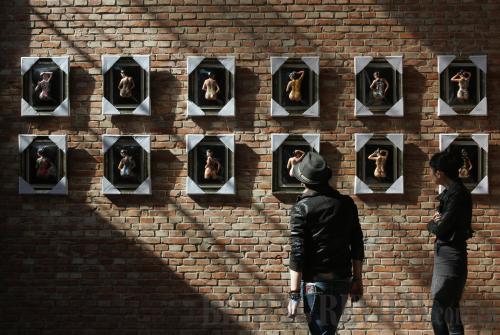|
 |
|
Beijing's 798 Art District (ZHENG HUANSONG) |
Traditional Beijing
Peking Opera is the most famous of all Chinese opera and certainly the quintessential traditional Chinese culture. It combines music, vocal performance, mime, dance and acrobatics. Chinese opera features four main types of performers: Sheng, Dan, Jing and Chou. The costumes, the make-up and the gestures of these performers convey a special meaning, which should allow non-Chinese speakers to understand the plot. Stories are usually based on Chinese legends. Acrobatic shows are a must see for young and old alike. China has many world class acrobatic troupes who offer breathtaking performances, including group bicycling, contortionists, porcelain juggling and martial arts.
Shadow puppetry is an antique and traditional art in China. If you don't understand Chinese it won't matter since the puppet shows usually have no speaking parts and are only accompanied by music. The stories are traditional Chinese folktales and are easy enough to understand simply through the actions of the puppets.
Modern Beijing
If Beijing is about traditional culture, the city has also taken a great leap forward in the last 20 years. Modern dance, avant-garde visual arts, a remarkable opera house, Beijing has become a center of contemporary art.
Catch a performance of some prestigious modern dance troupes like the Beijing Modern Dance Co., Beijing Dance/LDTX and the Beijing Dance Academy and discover the innovative and influential works of Chinese choreographers and dancers. The National Center for the Performing Arts, locally known as "The Egg," regularly welcomes modern dance exhibitions from all over the world, but if you prefer a more underground ambiance, head to the Caochangdi Arts Workstation, home to the Living Dance Studio, China's first independent dance-theater company. If you're more into visual arts, Beijing will certainly not disappoint you. The Dashanzi Art District, also known as 798 Art District, is an old industrial zone that houses dozens of Chinese and foreign galleries, displaying paintings, sculptures, plastic arts or diverse art performances. Spend a day walking around this huge area where galleries are surrounded by bars, restaurants and a variety of craft shops. Caochangdi Village, though much more informal, is also a popular venue of Beijing's avant-garde art community.
Beijing at Night
If you're looking to have some fun after dark, you'll be spoiled for choice. Beijing has countless bars, nightclubs and KTVs. Fine wines, delicious cocktails, cheap beers, the city has it all. Check out Sanlitun bar street, Houhai area, Nanluoguxiang, or the area around west Chaoyang Park for some of the hippest nightclubs in the city. For something a bit more extravagant, head to Lan Club, famous for Philippe Starck's design or Chocolate, a Russian-style nightclub, where you can spend a night in Russia without leaving Beijing.
KTV is very popular among Chinese people. The karaoke rooms are charged based on their size and time spent singing. In the big KTV venues like Party World or Melody, buffet, drinks or snacks are offered for free and the English songs selection is regularly updated. CA
Beijing Entertainment Venues
> Chinese Shadow Puppet Cultural Center
28 Qinghua Xilu (100m west of Yuanmingyuan's south gate)
Haidian District
Tel: 8610-86569350
> Chang'an Grand Theater (Peking Opera)
7 Jianguomennei Dajie
Dongcheng District
Tel: 8610-65101309
> National Center for the Performing Arts
2 Xichang'an Jie
Xicheng District
Tel: 8610-66550000
> 798 Art District
Dashanzi Art District, 4 Jiuxianqiao Lu
Chaoyang District
> Party World (KTV)
1-2/F, Prime Tower (Fanli Dasha)22 Chaoyangmenwai Dajie
Chaoyang District
Tel: 8610- 88576588
> Melody (KTV)
B77 Chaoyangmenwai Dajie
Chaoyang District
Tel: 8610-65510808
> Lan Club
4/F LG Twin Towers12B Jianguomenwai Dajie
Chaoyang District
Tel: 8610-51096012
> Chocolate Club
19 Ritan Beilu
Chaoyang District |